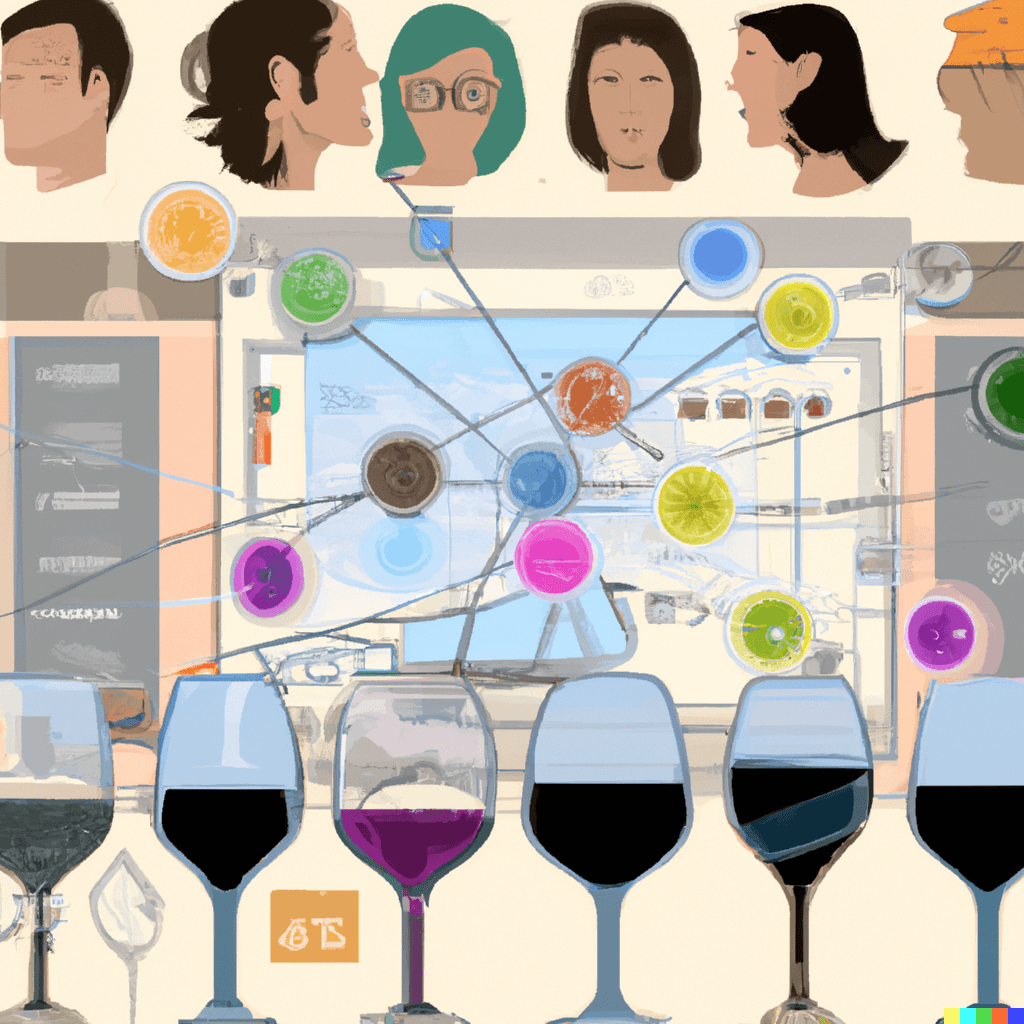Vine Stars Blog

Understanding the key differences between return on ad spend (ROAS) and return on investment (ROI) is crucial for effectively managing your marketing budget and measuring the success of your digital advertising campaigns. By accurately calculating and analyzing these two essential KPIs, you can gain valuable insights into the efficiency and profitability of your marketing investments across different channels and partners. This article will delve into the differences between the two measurements, how to practically use them and how to calculate each. Measuring Return on Ad Spend (ROAS) Return on ad spend (ROAS) is a metric used to evaluate the effectiveness of advertising campaigns. It calculates the revenue generated by a campaign compared to the amount spent on advertising. To calculate ROAS, divide the revenue generated by the ad campaign by the cost of the ad campaign: ROAS = (Revenue from ad campaign) / (Cost of ad campaign) For example, let's say your winery is focusing on increasing ecommerce sales, and you decide to run a springtime social media advertising campaign to drive sales of your new rosé. You create targeted audiences using your CRM data, build visually engaging ads, and offer free shipping for orders over a certain amount. The ad spend for the campaign is $8,000, and as a result, you generate $35,000 in ecommerce sales revenue. In this case, your ROAS would be 4.3 ($35,000 / $8,000). This means that for $1 spent on the campaign, you earned $4.30 in revenue. What is Good ROAS? There are many variables such as industry, product, company profit margins and marketing channels to take into consideration when defining ROAS success. A Nielsen report says an average across all industries is 2.87 but some companies may require a ROAS of 10 to claim a campaign was a success. A ROAS of 4 is a common goal to strive for with digital advertising campaigns. Anything over 1 means your advertising spend is covered by revenue. Start measuring ROAS to set a benchmark and begin to calculate what defines success for your winery. Measuring Return on Investment (ROI) Return on investment (ROI) is a broader metric that measures the overall efficiency and profitability of your marketing efforts. It takes into account not only the cost of the ad campaign but also other related expenses, such as content creation, staff salaries, and software subscriptions. To calculate ROI, subtract the total cost of the marketing campaign from the revenue generated, then divide the result by the total cost of the marketing campaign: ROI = [(Revenue from marketing campaign) - (Total cost of marketing campaign)] / (Total cost of marketing campaign) Like the previous example, let’s measure the ROI of a campaign to increase ecommerce sales. You decide to implement a comprehensive marketing campaign that includes targeted social media advertising, email marketing, and influencer marketing. The total cost of the campaign, including ad spend, content creation, and salaries or vendor fees, is $11,000 and generates $35,000 in ecommerce revenue. To calculate the ROI, you would use the following formula: [($35,000 - $11,000) / $11,000]. This calculation results in an ROI of 2.2, which means that for every dollar spent on the campaign, you earned $2.20 in revenue. What is Good ROI? In digital advertising there are wide swings in ROI depending on the channel. Email marketing performs very well and can deliver a 36:1 ROI ( $36 being returned for every $1 spent) while SEO, a long term tactic, can return 22:1 which is also an excellent return. An average ROI to strive for with your digital campaigns is 5:1 when using a blend of tactics and channels. Keep in mind when measuring ROI you are including all your costs including media cost, vendor fees and sunk costs. Mastering the process of calculating and understanding ROAS and ROI is vital for winery marketers looking to make the most of their precious marketing budgets. By harnessing the power of these key KPIs, you can unveil the true impact of your campaigns across different channels and partners, ensuring you allocate your resources wisely and drive maximum growth for your business. With each well-executed campaign, you are not only elevating your brand but also doing so with the confidence that your marketing investment is on solid, data-backed footing. Cheers to that!

In today's competitive wine industry, it's crucial to develop and execute a comprehensive marketing plan to increase tasting room visits. This article will guide you through the process of creating a marketing plan and campaigns that leverages SEO-optimized blog posts and both organic and paid social media advertising to target affluent wine enthusiasts locally and from cities within 200 miles. Define Your Target Audience Before diving into content creation, it's essential to define your target audience. In this case, we're focusing on affluent consumers within 200 miles of your winery who enjoy travel, belong to wine clubs or shop for wine online. Whatever audience demographic you’re trying to attract you’ll need to conduct market research to understand their preferences, such as favorite varietals, wine regions, level of affluence, food and travel preferences. Tap into your 1st and 2nd party data sources to get a clearer picture of your targeted consumer. For 1st party data, analyze your winery's website analytics (e.g., Google Analytics) to identify affluent visitors who have engaged with your content, signed up for newsletters, or made online purchases and note their geographic location to get an idea of how large the potential audience within 200 miles may be. Review your wine club membership database for customer demographics, preferences, and purchase history to identify affluent customers within the same targeted geographic parameters. For 2nd party data, collaborate with other wineries to exchange data on your targeted consumer i.e., affluent customers who enjoy travel and belong to wine clubs within 200 miles. Ensure compliance with data privacy regulations when sharing customer information. Write SEO-Optimized Blog Posts Write a series of 3 to 4 blog posts at least 600 words in length that will inspire the reader to visit your region and book a tasting at your winery. Create a content calendar that focuses on topics related to your winery, the wine region, and your target audience's interests. Aim to publish a new post every week until the series is fully published. Ensure each blog post is SEO-optimized by following these best practices: a) Keyword Research: Identify relevant keywords that your target audience is likely to use when searching for wineries, wine regions, or wine travel. Use tools like Google Keyword Planner or SEMrush to help with your research. b) On-Page Optimization: Incorporate your target keywords into your blog post's title, headings, and body copy. Be sure to optimize your meta tags, such as title tags and meta descriptions, to improve click-through rates from search results. c) Quality Backlinks: Build high-quality backlinks by collaborating with local influencers, travel influencers and influencers in cities within 200 miles of your winery. Expand your collaborators beyond wine and travel, consider food and lifestyle influencers and podcasters. Collaborate with your communications team to get blog content placed in regional media outlets when appropriate. Promote Your Blog Posts with Organic Social Posts Promote your blog posts on your winery's Facebook, Instagram, Twitter, and LinkedIn accounts. Don't forget these best practices to increase organic reach and engagement. a) Hashtags: Use relevant hashtags related to your region, wine varieties, or events to improve discoverability. b) Tagging: Tag local and regional influencers, brands, media outlets, or businesses in your posts to encourage engagement and sharing. c) Optimal Posting Times: Publish your content when your target audience is most active on each social media platform. Amplify Organic Posts with Paid Impressions Social media advertising allows you to reach a broader audience and target your ads to specific demographics and geographic locations. Follow these steps to create effective paid social media campaigns using your organic posts as the creative. a) Select the Right Platforms: You will most likely want to start with the Facebook advertising universe. TikTok, Twitter and Linkedin could be tested depending on your targeted consumer. b) Ad Creation: You’ll be using your organic posts as a starting point for the ad creative. Your posts should have a compelling headline that teases the article topic and sucks the reader in, so they stop scrolling and read the post body copy. The body copy should hook the viewer and include a strong call to action to encourage clicks to the full article. Use your original post as the model for creating 4 or 5 more variations. Try different post images, headlines and calls-to-action with each. Sticking to one element to experiment with, like the post image, is good method for optimizing each element over a week or two until you have the highest performing variant. c) Targeting: Utilize the platforms' targeting options to reach your desired consumer. Be sure to build audiences with your Facebook pixel data (while it lasts) and any 1st party data Facebook allows i.e. email lists for lookalikes. Use your Google Analytics to learn who’s visiting your site and use those demographics to inform the platform demographic targeting. Focus on geographic targeting to reach users from nearby cities. Use your POS or e-commerce platform to export a file of email addresses belonging to people who live in cities and towns within 200 miles who have purchased from you. Upload the file into Facebook’s audience creation platform and build an audience of lookalikes. d) Budget and Bidding: Allocate an appropriate budget for your campaigns and select the right bidding strategy to maximize your return on investment. This campaign is not a sprint it’s a marathon so set the campaign budgeting options accordingly. Spread your budget out evenly over at least three to four months. Monitor and Optimize Your Campaign with Advanced Attribution Methods Precise campaign attribution is crucial for optimizing marketing campaigns and maximizing ROI. Using advanced tracking methods, you can measure campaign impact and make data-driven decisions for mid-flight adjustments. a) UTM Parameters: Use UTM parameters to track clicks from social media ads and posts. Add UTM parameters to URLs to collect data on source, medium, and campaign name in Google Analytics, attributing traffic and conversions to specific efforts. b) Conversion Tracking Pixels: While you can, implement tracking pixels like Facebook Pixel, Google Ads Conversion Tracking, or LinkedIn Insight Tag to track user actions and conversions post-click. This data helps attribute success to specific platforms and optimize campaigns. c) Custom Landing Pages: From your blog posts, link to unique landing pages that may include offers or more information for travelers. Submissions, or bookings from these pages will be easy to track and attribute to the campaign. d) Google Analytics Goals: Set up Goals in Google Analytics to track user actions, such as tasting room bookings, and attribute conversions to specific channels and tactics. e) Click IDs and Postback URLs: Use Click IDs and Postback URLs for advanced attribution, tracking conversions and attributing them to specific ads or platforms. This method is useful for mobile app campaigns and can be implemented with third-party tracking solutions like AppsFlyer, Adjust, or Branch. Analyze Results and Iterate This is the secret sauce for any marketing campaign. Once you have executed the marketing plan for a few weeks, analyze the results and identify areas for improvement. Use the insights gained from your analysis to make informed decisions about future content creation, social media amplification, and advertising strategies. Conclusion Crafting a marketing plan is essential for driving visitation from nearby cities and standing out in your region. Use the marketing tactics outlined above; define your target audience, develop SEO-optimized blog posts, leverage organic and paid social media to amplify your content, and utilize advanced attribution methods to analyze results and continue to optimize. If you need assistance in executing your own comprehensive marketing plan and campaigns, consider hiring an experienced digital marketing agency like Vine Stars to help guide you to success. Now is the time to act, refine your marketing approach, and grow those critically important tasting room visits. Cheers to that!

Marketers use the concept of scarcity to create demand for their products by leveraging the psychological principle that people tend to place a higher value on items that are perceived as rare or limited in availability. This makes consumers more likely to purchase a product, even at a higher price, as they may feel a sense of urgency and exclusivity. Unleash the power of scarcity and FOMO in your DTC marketing plans to skyrocket tasting room, club, and e-commerce sales. Here are 6 tactics to get you started. Scarcity Marketing Tactics Limited time offers: Create a sense of urgency by offering a promotion like 2-for-1 or a discount for a short period of time to prompt tasting room and e-commerce visitors to act quickly. Not all wineries discount, especially highly allocated wines, but a short-time offer promoted with email, social media and by tasting room staff will cause consumers to act. Limited quantities: This tactic gets to the heart of scarcity by promoting a wine that’s scarce! By promoting a wine in limited quantities or is a limited edition, you’re creating a sense of FOMO that will cause some consumers to buy rather than miss out. And isn’t FOMO what this concept is all about? Exclusive access: Wine clubs and tasting rooms, by design, are all about exclusive access to wines and experiences made for members and visitors only. But the exclusive access concept can be extended to e-commerce consumers by making wines or offers available only to email and SMS subscribers. Wines or offers available only to subscribers will grow email and SMS lists, drive sales and improve other metrics like opens and clicks. Waitlists or pre-orders: A classic sneaker market tactic. By encouraging your consumers and fans to join a waitlist or pre-order an upcoming release, you will create anticipation and demand even before the wine is officially launched. This tactic works best for club and e-commerce. Flash sales: This tactic has grown extremely popular online in many categories, wine included Flash sale events happen for a very short period of time and can involve significant discounts or special wines, creating a sense of urgency and excitement. Flash sales are excellent ways to activate your email and SMS list. Social proof: Create a section of your website homepage and newsletter that showcases user-generated-content i.e. consumer reviews, testimonials or experience anecdotes, or links to social media posts will emphasize how highly sought-after and potentially scarce your wine is. By using these tactics combined with digital marketing channels and campaigns, DTC marketing managers can effectively leverage the concept of scarcity to create demand for their wine, clubs and tasting room, resulting in increased sales across the board.

Programmatic advertising is the automated buying and selling of display, video and content ads, using permission based first-party data you own and collected yourself, permission based second-party data that may have been shared with you by a trusted partner and occasionally 3rd party data that may have been purchased. In a programmatic advertising campaign, real-time bidding is used to place ads in front of consumers who are more likely to be interested in a brand’s products. These ads can appear on various digital platforms, such as social media, websites, and mobile applications. Ad types can be static display banners, rich media banners, video or native content. Put simply, programmatic advertising brings your brand, wines and messaging to your best consumer throughout the web at a massive scale. Here are some of the key elements of programmatic advertising: Targeted Advertising With programmatic advertising, brands can use data to target their ads to specific audiences, such as those who have previously purchased their wines or those who have shown an interest in wine. This targeting uses one or more of the data sources mentioned previously to ensure that the ads are shown to people who are more likely to convert into direct sales. Increased Awareness A programmatic advertising campaign can help increase brand awareness by displaying ads to a wider audience than the brand may be able to reach through basic channels such as social and email. This helps to increase the winery’s visibility, making it more likely that people will consider them when making a wine purchase online, in a wine shop or restaurant. As more people become aware of the winery, direct sales are likely to increase. Retargeting Campaigns Retargeting is a marketing technique that shows ads to people who have previously engaged with a brand, but have not yet made a purchase. By retargeting these potential customers, winery’s can remind them of their previous interest and encourage them to revisit the winery website, subscribe to an email list, or make a purchase. Customized Messaging Programmatic advertising allows brands to customize their messaging based on the programmatic audience they are targeting. For example, a winery can create ads that promote their high-end wines to a more affluent audience, while promoting their more affordable wines to a broader audience. This kind of data-based targeting helps brands to deliver the right message to the right consumer which could increase direct and retail sales. Measurable Results One of the most significant advantages of programmatic advertising, like most digital advertising, is that it provides measurable results. Winery’s can track the success of their campaign in real-time, making it easy to make changes to improve the results. By measuring the return on investment (ROI), brands can optimize their campaigns to maximize their direct sales. Cost Effective Programmatic ads offer a cost-effective alternative to direct buys, with high levels of targeting that reach the right consumer wherever they are online. Ads are typically sold on a CPM (cost per thousand impressions), CPC (cost per click), CPA (cost per action) or CTC (click through conversions) basis, with the majority of programmatic ads sold using the CPM model. This cost efficiency helps advertisers and brands extend their ad budgets 10 to 20 times farther, making it an ideal option for small to medium-sized brands. The effectiveness and cost efficiency of programmatic advertising is hard to deny and with the right help is fairly simple to begin using. If you are interested in learning more about how to get started with programmatic advertising CLICK HERE to get in touch.
